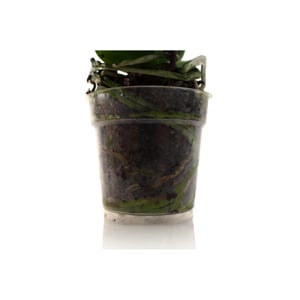
 Caring for a Phalaenopsis Orchid, otherwise known as a moth orchid, is generally pretty simple. If you remember to water your orchid with 3 ice cubes once per week, make sure it’s warm enough and gets plenty of indirect sunlight, you’re on the right track to a healthy Phal.
Caring for a Phalaenopsis Orchid, otherwise known as a moth orchid, is generally pretty simple. If you remember to water your orchid with 3 ice cubes once per week, make sure it’s warm enough and gets plenty of indirect sunlight, you’re on the right track to a healthy Phal.
While following these daily, weekly, and monthly maintenance guidelines are crucial to the health of your moth orchid, it’s also necessary to do some longer term upkeep. Here’s where repotting enters the equation.
Think about the last home improvement project you worked on. You may have replaced your aluminum siding, repainted a room or two, or retiled the kitchen floor. You might’ve done this simply because you felt like sprucing up your environment. More likely though, your house went through some normal wear and tear. Maybe the paint began to chip or a crack formed in your kitchen tile. We come to expect this as homeowners.
Just like our houses need updating once in a while, Phalaenopsis orchids require a change of scenery every now and then. The media your orchid grows in wears down with age, leaving your orchid vulnerable to root rot. By repotting your orchid, you’re replacing the old planting media with a fresh new batch. We recommend repotting your Phal at least once every one to two years.
Sometimes, your orchid may need repotting for reasons beyond natural wear and tear. Here are some common signs that it’s time for a new pot:
These are a few signs it might be time to repot your Phalaenopsis orchid. In our next two posts, we’ll review some easy-to-follow steps when repotting time arrives.
For a closer look at repotting your Phalaenopsis orchid, check out this orchid care video!

Copyright Just Add Ice® Orchids 2023